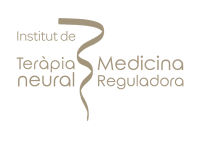Schizophrenia Treatment
13 Minutes
CONTENTS
Schizophrenia is a serious mental disorder marked by delusions, hallucinations strange behaviors, and emotional reactions, as well as trouble working. Premium residential and inpatient care is a must if you have a loved one who is battling with this ailment or fear they are. Therapy, support, medical care, social and communicative skills, 5-star resort-like amenities, and much more are all available at a high-end luxury residential treatment center for schizophrenia. It provides everything your loved one requires to make long-term, positive adjustments in order to live a better life while dealing with this chronic condition.
- Schizophrenia affects around 20 million individuals worldwide.
- Reported cases of schizophrenia occur at a rate of 1.5 per 10,000 people each year.
- Schizophrenia is among the world’s top 15 causes of disability.
- About 5 percent of individuals with schizophrenia commit suicide, with the risk being higher during the outset of the illness. Adults in the United States are projected to have 1.5 million cases of schizophrenia each year.
- Schizophrenia is most typically diagnosed in young folks in their late teens to early thirties, with men showing symptoms sooner than women.
- In the United States, people with schizophrenia lose an average of 28.5 years of their lives.
- Asian Americans (5.4 percent ) have the lowest lifetime rate of self-reported psychotic symptoms.
- Schizophrenia patients are 4 to 6 times more likely to commit an act of violence than the average general public.
- Schizophrenia sufferers are responsible for 6 percent of all homicides in Western countries.
- According to a Swedish study, 13.2 percent of individuals with schizophrenia have committed at least 1 violent offense.
- In Sweden, 10.7 percent of males and 2.7 percent of females were guilty of a violent offense during the first 5 years of receiving a schizophrenia (or associated) diagnosis.
- Obsessive-compulsive disorder affects 23 percent of patients with schizophrenia.
- Panic disorder affects 15 percent of patients with schizophrenia.
- Post-traumatic stress disorder affects 29 percent of people.
Schizophrenia is a chronic illness that does not improve on its own, so treatment is essential. It’s also not uncommon for people with schizophrenia to have a co-occurring disease like anxiety, depression, bipolar disorder, and other mental health issues, making a precise diagnosis a crucial part of the therapeutic process.
Medication, in complement to therapy, is an essential part of the treatment plan for schizophrenia since it helps patients normalize their thinking and perception processes. Luxury residential and inpatient treatment are particularly beneficial since it individuals to try out various medications and methods of treatment in a secure environment as they search for the ideal treatment plan.
When used in conjunction with therapy and medication, alternate and holistic therapies can be very beneficial. Inpatient schizophrenia treatment will assist patients in making long-term, consistent progress in terms of managing their symptoms and reclaiming healthy, balanced social function.
Those struggling with schizophrenia have a favorable prognosis. It is practical to accomplish long-term transformation with a dedication to the upscale inpatient or residential treatment process, and other elements such as continuing therapy and medication.
Schizophrenia is a complex illness, and each patient’s needs are unique. As a result, luxury inpatient rehab centers provide several degrees of care. During the admission and evaluation, staff will assist the family in determining the proper level.
Residential Treatment for 24 hours. Some people with schizophrenia need round-the-clock care for a period of stability. Serious symptoms and behavior may demand this intensive therapy period, which involves 24-hour staff assistance, symptom control, and medical attention. This is only a transitory situation, and your dear one will soon stabilize and move on to a more extensive treatment plan.
Living in a semi-independent manner. Semi-independent residence with private bedrooms and care plan implementation is the next level down in care. Your dear one will begin rigorous weekly counseling, family therapy, and group therapy at this level of care, and will begin developing social skills and independent living.
Luxury Psychosis Treatment in Europe 2023
Living on Your Own. This standard of treatment is an excellent method to move from inpatient treatment to independent living. Individuals at this level continue to receive treatment but reside elsewhere. Their ties to the treatment community assist patients in adjusting to life from outside care while still receiving assistance and benefiting from the social relationships they developed while in residence.
You can also choose Luxury Rehab’s extended services, which are essentially outpatient treatment. Family, individual, or group therapy sessions, as well as coordinated care, emergency assistance, alternative treatments, and social activities, are all available. These are excellent for keeping essential contacts and receiving care for this serious disease as needed.
Each client receives individualized treatment in a luxury inpatient treatment center managed by a team of professionals in all aspects of mental health and wellbeing.
The Initial Evaluation. Every resident’s therapy begins with a thorough evaluation when they arrive at the facility. One-on-one meetings, family discussions, medication management, and a mental, physical, and health records evaluation are all part of this process at a high-end treatment center. To help you or a dear one feel comfortable starting this journey, the admission process also involves group discussion and a tour of the facility.
Collaboration with Family. Mental illness does not affect just one person; it affects the entire family. With the requirement of at minimum one family session each week, luxury rehab centers include the families in the enrollment process all through treatment.
Holistic Treatment. Patients have at least 2 individual sessions with therapists every week, using the most suitable types of therapy, such as behavioral therapies. Medication, alternative treatments, group sessions, work and life skills, regular family counseling, and everything else a client might need to be successful are all components of comprehensive schizophrenia care at a luxury treatment center.
Private residences are available. The unique inpatient treatment facilities have a limited number of clients, making them a safe, discreet, and comfortable alternative to a standard hospital setting.
Treatment strategies that are tailored to the individual. We design a completely tailored treatment plan after a rigorous set of assessments that includes methods and techniques to conquer the most difficult hurdles and ensure deep healing.
The emphasis is on health and wellness. The chefs provide delectable, wholesome, delicious food to help you relax throughout your rehabilitation. Meditation, yoga, acupressure, massage, and fitness and strength classes are also available.
A Community that Cares. The upscale luxury treatment community is designed with empathy and mutual support in mind. Along with the privacy of the clients, when desired, residents can collaborate with specialist teams and their families, as well as other clients. To begin, every client usually spends 15 hours each week in group therapy. Here, they form strong social bonds that help them build skills for greater overall healing and recovery.
Long-Term Support for Long-Lasting Changes. Premium Rehab treatment centers strive to give every client the amount and quality of care that will result in long-term changes. Long-term upscale schizophrenia residential therapy focuses on encouraging individuals to make significant behavioral adjustments that they can maintain outside of treatment.
The finest thing you can do for somebody with schizophrenia is to assist a loved one in getting into a premium treatment and care center. You can’t tell if they have this ailment without psychiatric assistance, but you can tell whenever something is not right. Consider the following warning signs and symptoms of schizophrenia, which may suggest that a loved one needs to be evaluated and treated:
- They appear to be unhappy and socially isolated.
- They’ve developed a suspicion or paranoia. They may even experience delusions or hallucinations, which are mistaken beliefs that remain over time.
- In certain people, schizophrenia generates a flat emotional impact and a loss of expression.
- Your close one may talk in a bizarre, nonsensical manner.
- Their feelings and responses, like laughing at inopportune times, may appear unsuitable.
- They don’t appear to be able to function regularly in terms of everyday routines, cleanliness, employment, or household chores.
- Their actions are out of the ordinary, and they may be impetuous or lacking in inhibition.
If you notice any worrying indicators, it’s critical that you get treatment for a dear one. Expert evaluation and assistance are available at high-end Schizophrenia rehab programs. You can bring your dear one here to get evaluated and have a complete mental and physical examination. From there, we can devise a therapy strategy.
Involvement of Families in the Treatment of Schizophrenia
Family involvement is a critical component of successful schizophrenia treatment. Psychotherapy and medication aid in the management of symptoms and the development of good behavior within your loved one. When they complete therapy, however, they will depend on their family’s compassion and assistance to help them regain stability.
Related: Catatonic Schizophrenia Inpatient Treatment
Residents in luxury rehab programs receive at least 1 hour of family counseling per week as part of their treatment. At a minimum, one family member participates in the initial evaluation so that the team of professionals working with your dear one gets a complete understanding of their behaviors, needs, and skills.
Families are also invited to attend instructional programs and attend support group sessions. These will provide you with further information about schizophrenia and what your close one is going through. You’ll know how to properly help them through their therapy and after they return back home.
Your first day within the premium treatment facility is designed to familiarize you with your environment, help you feel more at ease, and discover the most efficient therapeutic methods as you start your treatments.
When you arrive at a high-end luxury rehab facility, you will be welcomed cordially by an enrollment specialist who will assist you in settling into your temporary second home. You will finish the onboarding process together, sign any necessary documentation, and start your program orientation.
You will get a tour of the facility, interact with representatives of your treatment team, be escorted to your room, go over the daily schedule, and get to know your roommates or in case of luxury settings, a private room will be arranged for you as per your preferences. You will have time to acclimate to your accommodation before a meal at the conclusion of the day.
We understand how difficult it is to enter inpatient care for schizophrenia. It might be difficult to leave your companions, family, and even your career while undergoing treatment. We do everything that we can at luxury rehab for schizophrenia to make you feel at ease and devise an upscale treatment program for you. We recognize that in order to begin your journey to a better life, you must feel comfortable and have faith in us.
You will be dealt with care, respect, and compassion from the time you contact the luxury rehab facility.
Our settings are luxury accommodation with limited inhabitants, allowing you to focus on your treatment in a peaceful, personal setting.
The clinicians at upscale treatment centers use evidence-based therapy techniques that have been proved to help people with schizophrenia.
We also use a variety of holistic therapies to promote total body wellness.
The highly qualified team of mental health professionals will offer you the treatment and support you require, as well as the insight you require to begin your recovery process and progress toward your emotional, interpersonal, professional, and life objectives.
Change at Luxury Rehab Facility that Lasts for a Better life
Allowing your mental health to rule your life is not a good idea. We encourage you to move to the next level with us if you are struggling with schizophrenia and have not yet discovered a solution. You have earned the right to live your greatest life. We’re here to help. Please contact us right away.
Certain premium rehab treatment centers are designed as therapeutic communities, with the belief that recovery from addiction and mental illness is a team effort. Within this supportive environment, your loved one will collaborate not only with clinicians and therapists but also with families and peers.
A community is beneficial for treatment because it allows residents to acquire social and cognitive skills from one another. Your close ones will feel heard and seen, as well as included and encouraged. They will form long-term bonds here, not just provide temporary assistance.
Comprehensive, evidence-based care in a community environment is an excellent method to cope with and accept life with schizophrenia. This sickness has no cure, but it can be successfully treated. With therapy at a luxury treatment center, you or a close one can learn to recover and embrace a brighter future.
Please contact us right away if you or a dear one is dealing with schizophrenia.
Sadly, the majority of the general population still don’t understand what causes schizophrenia, there is a lot of stigmas attached to it. Schizophrenia is not really a moral flaw, and it does not imply that you are mad. In your moment of need, the specialists at your high-end luxury treatment center for schizophrenia will be available to help you and explain your disease to family members and friends who may not comprehend, allowing you to build stronger relationships and a better support system.
Regretfully, prejudices about schizophrenia still exist, but you don’t have to deal with them when seeking medical attention for a psychotic episode. The less stressor you have to cope with, the more effort and resources you’ll have to focus on improving yourself. A luxury schizophrenia rehabilitation center might give you the opportunity to escape daily stress and focus all of your energies on rehabilitation.
The most significant advantage of luxury schizophrenia treatment centers is that they are staffed with specialists who are well-versed in the subtleties of this disorder. Schizophrenia is frequently associated with other severe mental illnesses, such as attention deficit hyperactivity disorder (ADHD) and depression.
There is strong evidence that there is a genetic link between schizophrenia and ADHD, and people with ADHD are far more likely to acquire schizophrenia symptoms later on in life. ADHD, like schizophrenia, is significantly more common among boys. Every year, 4.7% of adolescent girls and 12% of adolescent boys are diagnosed with ADHD. Because the combination of these serious conditions generates a whole fresh range of treatment issues, it’s no wonder that many persons seeking premium inpatient treatment for schizophrenia also seek therapy for ADHD at high-end treatment centers.
At luxury schizophrenia facilities, there is a real sense of community. You will feel less alone if you are accompanied by caring specialists who know your disease as well as other schizophrenics. Schizophrenia affects millions of people in the United States, and many of them go misdiagnosed for years. Undiagnosed schizophrenia can cause anxiety and depression, among other major issues. As a consequence of their condition, some people with schizophrenia feel alienated, and many family members and friends can unintentionally injure people with their remarks about the sickness. Although there is no cure for schizophrenia, the correct luxury schizophrenia facility can help you understand to live with it more successfully.
For a complimentary consultation on selecting a luxury schizophrenia treatment center in your neighborhood, call us at any time. We’re here for you 24 hours a day, 7 days a week to help you get started on your path to a healthier life.
FAQs
What factors contribute to the development of schizophrenia?
It is now well understood that schizophrenia is a brain illness. It is possible that the neurological anomaly is caused by a faulty brain cell developmental process, or by a problem with brain cell biochemistry. The exact cause of these brain changes is unknown, while genes acquired from one or both parents are likely to play a role. Other factors, including exposure to specific illnesses or other stresses at an early age, are believed to play a role, although much goes unrecognized.
In schizophrenia, what is the most prevalent hallucination?
The most prevalent hallucination in schizophrenia is auditory hallucinations, also known as “hearing voices.” Voices can appear to come from within one’s own head or from outside as if someone is speaking to them. These voices may direct the individual with schizophrenia on what to do or make observations about their actions. It’s possible that the voices will communicate with one another. Individuals with schizophrenia frequently hear voices for a long period of time before anybody else realizes the problems. Individuals with schizophrenia may also have hallucinations including seeing objects and people that aren’t there, feeling as if they are being caressed by phantom fingers, or smelling aromas that no one else can sense.
HOW THE BALANCE CAN HELP WITH Personality Disorder
The Balance RehabClinic is a leading provider of luxury addiction and mental health treatment for affluent individuals and their families, offering a blend of innovative science and holistic methods with unparalleled individualised care.
A UNIQUE METHOD TREATING Personality Disorder
a successful and proven concept focusing on underlying causesOur program consists of treating only one client at a time individually designed to help you with all the problematic aspects of your life. All individual treatment sessions will be held at your private residence.
more infoYour program is designed based on your personal needs. The team will exchange daily information and adjust the schedule as we go. Our therapists will work with you treating the root causes and not just the symptoms and goes beyong your stay to ensure lasting success.
more infoOur biochemical imbalance can be affected by diet and stressful life events, but it often goes back to genetics and epigenetics. We do specific biochemical laboratory testing to determine an individual’s biochemical imbalance. Combining the results of the lab tests with anamnestic information and clinical tests, we prescribe an individualized and compounded vitamin, mineral, nutrient protocol to help recover from various disease states.
more infoOur experts combine the best from psychological treatment, holistic medicine to support you individually and providing complementary therapies all coordinated from one source working complementing each other integrative.
more infoUsing latest cutting-edge technology-based therapies such as Neurofeedback, tDCS, and SSP, we can track the biological patterns of your body, giving us valuable insight into your health and well-being as well support your brain and body performance and recovery with neuromodulation.
more infoComplex trauma is often a key factor to distress mental and physical state. The Balance provides a safe space along integrated trauma treatment methods to enable healing.
more infoPersonality Disorder TREATMENT LASTING APPROACH
0 Before
Send Admission Request
0 Before
Define Treatment Goals
1 week
Assessments & Detox
1-4 week
Psychological & Holistic Therapy
4 week
Family Therapy
5-8 week
Aftercare
12+ week
Refresher Visit
Personality Disorder Insights
latest news & research on Personality Disorder
Schizophrenia And Suicide
Individuals with schizophrenia face a significantly higher risk of suicide compared to the general population
read more
CEOs And Psychopathy
CEOs with psychopathy often exhibit a unique blend of charm, charisma, and manipulative tendencies that can have profound implications for both their organizations and the wider business community
read more

































































